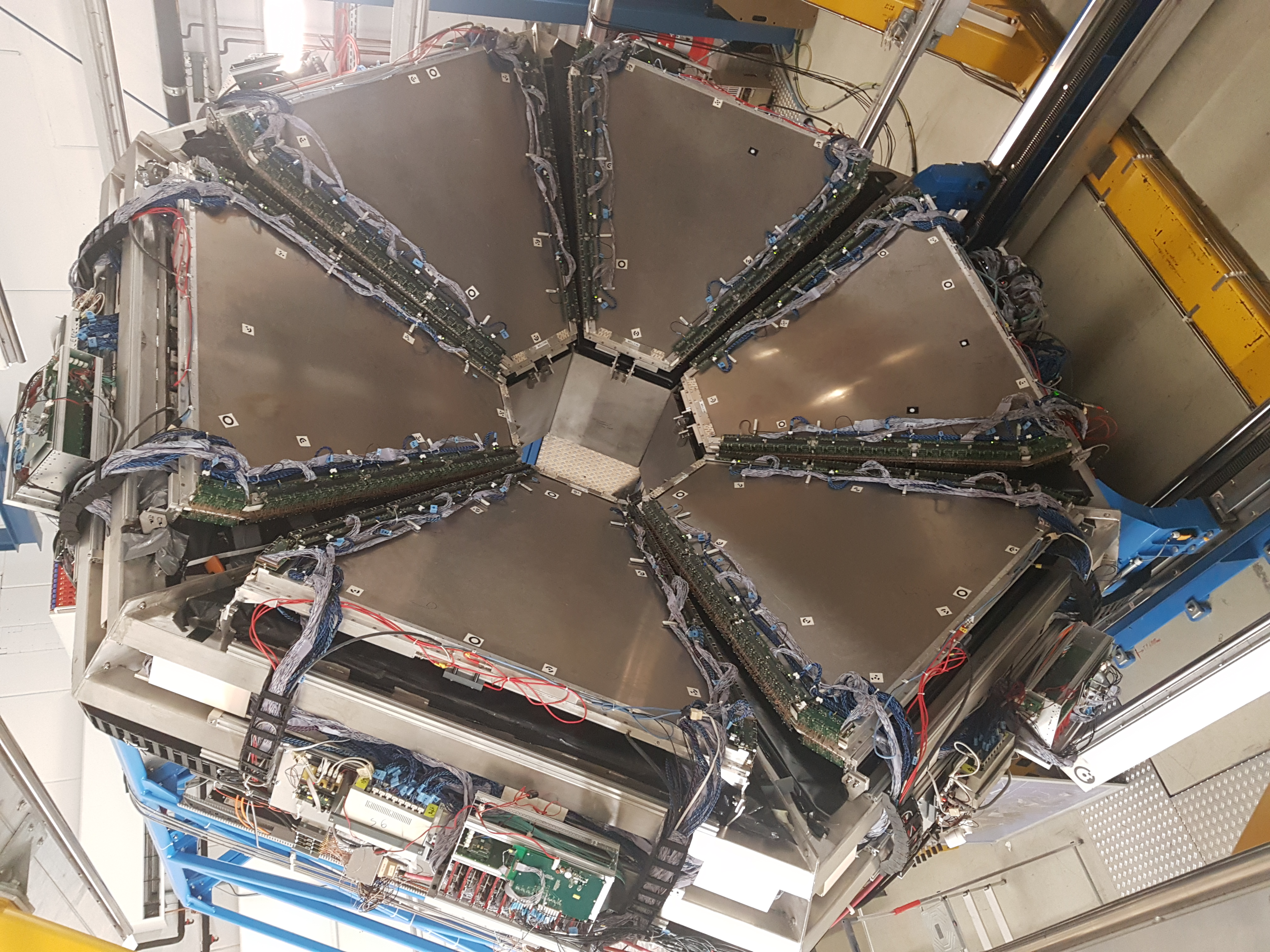
Electromagnetic Calorimeter (ECAL) to HADES allows for study via photon measurements of new reaction channels involving e.g. the production of neutral mesons, neutral Lambda(1405) or Sigma(1385) resonances in elementary and heavy-ion reactions. An additional advantage of such a device is the resulting improvement of the electron-to-pion separation at large momenta.
The detector is based on 978 lead glass modules recycled from the OPAL experiment. It is divided into 6 sectors, and it covers forward angles of 16◦ < theta < 45◦ and almost the full azimuthal angle. The readout of the detector is based on PaDiWa AMPS boards (charge to width measurement) developed especially for the calorimeter and connected to a TRB3 setup. A dedicated optical monitoring system has been developed for the ECAL. It is based on a laser LED and a microlens array with optical fibers which allows sending first the same amount of light into each single ECAL module. These light pulses invoke the same signal on the output as measured for real particles.
The four-sector setup was installed in 2018 and firstly used in the Ag+Ag at 1.58AGeV FAIR Phase-0 experiment in March 2019. In 2021-2022 the last two sectors were added, and after full commissioning, the full setup was used in the recent Au+Au beam scan run at 0.2-0.8 AGeV in February-March 2024.
Participating Institutions
Nuclear Physics Institute, Czech Academy of Sciences, Rez
ECAL module construction, calibration, slow control, analysis
Faculty of Science, Palacky University, Olomouc, Czech Republic
Calibration, slow control, analysis
Faculty of Physics, Warsaw University of Technology, Warsaw, Poland
Calibration, analysis
Smoluchowski Institute of Physics, Jagiellonian University of Cracow
ECAL main frame, analysis
Technische Universität Darmstadt
Read-out electronics (PaDiWa-AMPs), analysis
Gesellschaft für Schwerionenforschung Darmstadt (GSI)
Read-out electronics
Johann Wolfgang Goethe-Universität Frankfurt
Read-out electronics
Related Photo Gallery collections
| 2022-2024 | installation |
| September, 2017 | ECAL main frame installation |
| 2016 | Beam time at MAMI |
